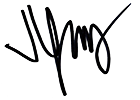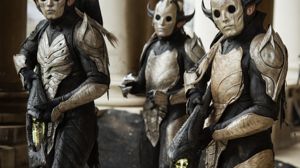It seems absurd to argue that an original idea can be expressed in a sequel to a film that is part of a contiguous cinematic universe based on a comic book series inspired by a pantheon of mythological characters born from a millennia-old pagan religion. And perhaps even more absurd when one actually sits down to watch Thor: The Dark World. From the very beginning, with its epic, overbearing prologue and charging digital armies, it's clear that this is not a flick that cares much for bending the rules of blockbuster filmmaking (it seems nervous, in fact, to even brush up against them). Everything unfolds as you might assume. Everything turns out like you might predict. And, at first glance, everything looks like exactly like you'd expect it to look.
But there's something tricky about this second Thor movie (or third, if you count The Avengers). As much as it feels the same as everything else, it's different. And as much as it looks just like all the other big-budget comic book fantasies, it doesn't. Somehow, here in dreary November, we're getting the bombastic, self-aware, fun and colorful blockbuster we were waiting for all summer.
How did you do it, Magdalena?
There you were, hunched over your drafting table, your sketch pad, your digital tablet, conjuring up the environments and costumes and objects that would occupy the nine realms of Yggdrasil, The World Tree. They are (of course) imperiled by (of course) an ancient evil. And though we've seen the golden spires and constructivist walkways of Asgard in the previous Thor movie (no, not that one), we spend a lot more time among them in this sequel, and there's a thickness and richness to the world that feels tangible--even in sprawling shots clearly built in pixels.
That richness is in the details. The winged gondolas that patrol the skies of the city; the knifelike spaceships with whom they dogfight; the porcelain-doll facemasks worn by the dark elf infantrymen--it all seems a step too clever for the average Hollywood popcorn flick. Somehow, despite the tangle of constraints applied to your work by the previous film's production design and the Walt Simonson comic art that inspired it, you and your fellow conceptual artists managed to create some beautiful landscapes and objets d'art.
This level of cleverness and craftsmanship is the sort of thing easily taken for granted. Many critics made it a point to admire the production design in Man of Steel (for lack of anything else to admire, I suppose), but all that insectoid, polished-ebony, bio-industrial type-stuff has been de rigeur since H.R. Giger ripped off his own lithograph to create the creature Alien. And while there's certainly nothing as innovative happening in Thor: The Dark World, there is something innovative about how well your designs fit the mood - and, I'd guess, the aspirations - of the film.
This is a big dumb movie that knows it's a big dumb movie, and finds space, in the seams between its bigness and dumbness, to sneak in just enough humor and shrewdness that the films seems constantly to be subverting its own mythic inclinations.
Sure, it doesn't make sense. Yeah, we've seen it all before. But nonsense and sameness, when correctly applied, can be virtues for this sort of populist art. It just takes a real artist to bring those concepts to life.
Sincerely,

Jared







